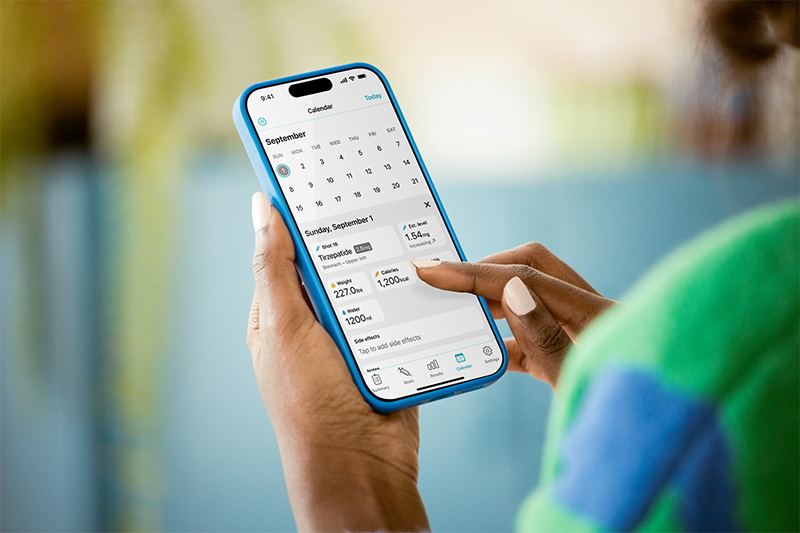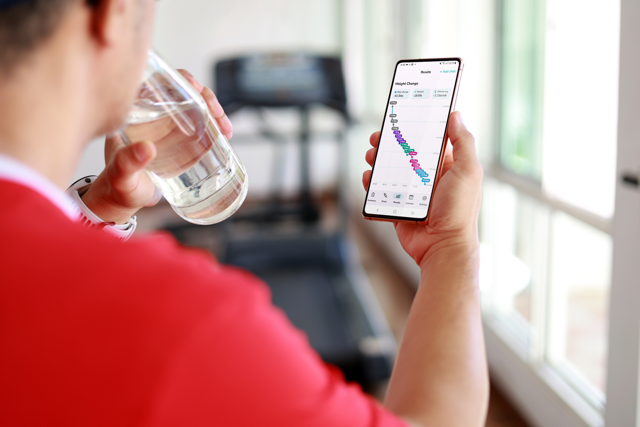Introduction
Weekly injectable GLP‑1 medications like semaglutide and tirzepatide (known as Mounjaro, Zepbound, Wegovy, and Ozempic) have ushered in a new era of weight‑management and diabetes care. They work by slowing stomach emptying, curbing food noise and cravings, and improving metabolic response, but they also introduce a unique routine of weekly shots, fluctuating medication levels and side effects that ebb and flow over the course of the week. Many people start their journey armed with general fitness apps, only to find themselves juggling reminders, notes and spreadsheets. This post explores why a dedicated GLP‑1 tracking app is different from typical fitness trackers and how using one can make your experience smoother and easier to understand.
Do regular health tracking apps work for GLP-1?
General health and fitness apps tend to focus on activity, calories and exercise. They provide robust nutritional databases, but don’t account for medications that need to be taken on a weekly schedule or the effects those drugs have on digestion and appetite. Without dedicated features, you may end up setting multiple alarms, making notes on paper or even forgetting injections altogether. And when side effects arise (nausea, constipation, fatigue or sulfur burps) there’s nowhere to log them in context.
Perhaps most importantly, generic apps do not show how your injection timing and daily habits interact. They lack charts tying your weight fluctuations to the timing of your doses or your hydration habits. Even if you meticulously enter your meals and workouts, the absence of medication‑specific tools makes it hard to see why you felt more tired on day five or why your hunger returned mid‑week. In short, these apps are not designed to help you manage a therapy where the drug’s level rises after injection and slowly tapers off.

What GLP‑1 patients really need
The routine of weekly injections introduces challenges that conventional apps ignore. A user‑focused GLP‑1 tracker should cover several key areas:
-
Weekly shot management: scheduling reminders and logging injection times so you never miss a dose and can see how long the medication has been in your system. Shot rotation tracking is also important; alternating between injection sites reduces irritation and promotes proper absorption.
-
Medication‑level insights: because the medication’s effect builds up and wears off over the week, it’s helpful to visualize estimated levels. Beautiful charts can help you understand how you might feel on day two versus day six, helping you plan workouts, meals and social events accordingly.
-
Simple reminders: timely prompts for injections keep you on track without overwhelming you with notifications.
-
Nutrition tracking: GLP‑1 therapy slows digestion and alters appetite. Tracking fiber, protein, calories and water intake helps you recognize patterns and maintain balanced nutrition. Attention to fiber can prevent constipation and support gut health, while adequate protein can help preserve muscle mass during weight loss.
-
Habit‑injection connections: tying habits (sleep, hydration, food choices) to injection timing can help reveal what impact behaviors have on side effect severity. Logging symptoms like nausea, fatigue or sulfur burps and noting what you ate beforehand can identify triggers.
How Shotsy makes GLP-1 tracking easier
Shotsy was built specifically for people using GLP‑1 medications. Its core features help simplify a complex regimen:
-
Easy shot logging: record injection dates, times and locations. Shotsy automatically calculates when your next dose is due and reminds you accordingly. Rotating injection sites becomes effortless, making sure each area has time to recover.
-
Estimated medication levels: an interactive chart estimates medication levels throughout the week, calculated based on averaged data collected during clinical trials. This can help you understand why your appetite may be minimal on certain days and higher on others, as you approach your next dose.
-
Symptom and side‑effect tracking: customizable logs allow you to note nausea, constipation, sulfur burps or fatigue. You can also associate side effects with meals, hydration or activity levels, making it easier to spot patterns and have informed conversations with your healthcare provider.
-
Comprehensive nutrition and hydration tracking: log protein, calories, water, and fiber to ensure balanced intake. Stay ahead of digestive side effects by monitoring fiber consumption and fluid intake.
-
Beautiful progress charts: Shotsy’s results charts combine weight, estimated medication levels, and shot history. The clear visualizations help you spot trends, celebrate victories and adjust routines when needed.

Conclusion
Injectable GLP‑1 medications need more than generic calorie counters or step trackers can provide. Weekly injections, changing medication levels and digestion‑related side effects call for tools that are tailored to this new world of health management. General fitness apps lack basic features like medication tracking and side‑effect logging. By contrast, a purpose‑built tracker aligns reminders, nutrition and symptoms with your injection schedule, helping you stay consistent and informed.
By combining easy shot management, estimated medication levels, comprehensive nutrition tracking and clear visualizations, Shotsy takes the guesswork out of your GLP‑1 journey. While we encourage readers to consult their licensed healthcare providers for medical advice, using a specialized app like Shotsy can help you stay organized and get the most out of your medication.
This post is intended for informational purposes only and is not a substitute for professional medical advice. Always consult your physician before making any changes to your medication or health routine.


